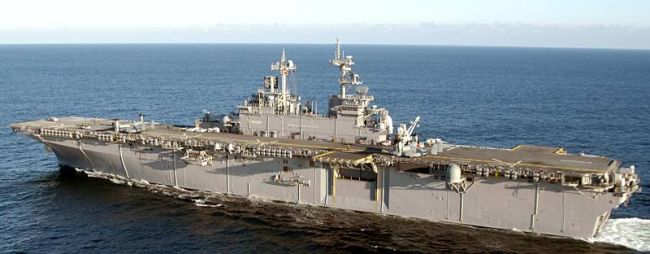WASHINGTON, May 3, 2012 — U.S. European Command, along with NATO allies and other close partnerships in Europe, remains critical to the United States, even as it implements new defense strategic guidance focused on challenges in the Asia-Pacific region and the Middle East, Navy Adm. James G. Stavridis, the Eucom and NATO’s supreme allied commander for Europe, said.
“Let’s face it: our most enduring pool of partners exists in the European theater,” Stavridis said during a recent interview with the Pentagon Channel and American Forces Press Service. He noted the strength of the 28-member NATO alliance, a 3 million-strong force with 24,000 aircraft and 800 ships. In addition, the allies have a $31 trillion collective gross national product, about $300 billion of which is devoted to defense budgets.
“This is an alliance of enormous resources, and it represents those that stand with us today in Afghanistan, in the Balkans, in the Libya operation and in [counterpiracy],” Stavridis said. “So these strategic, enduring partnerships in Europe are going to underpin the strategic focus on the challenges in Asia and in the Middle East.”
That demands even more focus on Europe and NATO, explained Navy Rear Adm. Mark C. Montgomery, Eucom’s deputy director for plans, policy and strategy. To address that risk elsewhere on the globe, he said, “we need to actually redouble our efforts to maintain our partners’ capability and capacity.”
Navy Vice Adm. Charles W. Martoglio, Stavridis’ former chief of staff and now deputy commander, called the U.S. military “the glue that enables NATO to operate at the high level of efficiency that it does.”
The U.S. military presence in Europe offers assurance to allies while helping them maintain the stability and economic foundation that helps create security, he explained. “So it is a win on the U.S. side, and it is a win on the European side,” he said.
But beyond the U.S. commitment to the NATO alliance, Stavridis noted Europe’s strategic geographic position. Forces easily can pivot from Europe into the Middle East, the Levant area at the crossroads of western Asia, the eastern Mediterranean and northeastern Africa, the Mediterranean as during the Libya operations, and down into Africa, he said.
The alliance also is postured to address security challenges, such as violent extremist organizations, directly on the European continent. “While [terrorists] have been active in Europe and there have been acts of terrorism in Europe over the last 10 years, Europe has been used primarily as a recruiting and financial center for terror activities,” Martoglio said. “But that can change quickly, should it ever get into the interests of violent extremist organizations to carry out large-scale attacks in Europe.”
Ultimately, Martoglio said, Eucom’s forward presence makes the United States more secure. “We are a nation that has an expeditionary capability. We fight our wars overseas so we don’t fight them on our own shores,” he said. “And Europe and our European partners are huge enablers of that expeditionary military capability.”
Stavridis said maintaining U.S. forces in Europe enhances their ability to build that capability in partnership with NATO allies and other coalition partners.
“Being in Europe gives us the opportunity to train, exercise and work every day with this combat-ready force that has fought with us in Afghanistan, the Balkans, in [counterpiracy] and other missions,” he said. “So there are a lot of good reasons for us to be engaged and ‘home-ported,’ as we would say in the Navy, in Europe.”
The new force posture in Europe, with a 15-percent troop reduction to be offset partially with increased ship, aircraft and special operations capabilities, ensures the proper force number and configuration to support the new strategy guidance, he said.
As it is implemented, Stavridis offered assurance that forces assigned to Eucom will stay actively engaged in vital real-world missions in Europe, Africa and the Middle East.
“We will continue to have an important and enduring mission in the European theater for many years to come,” he said.
Source:
U.S. Department of Defense
Office of the Assistant Secretary of Defense (Public Affairs)

 von
von 